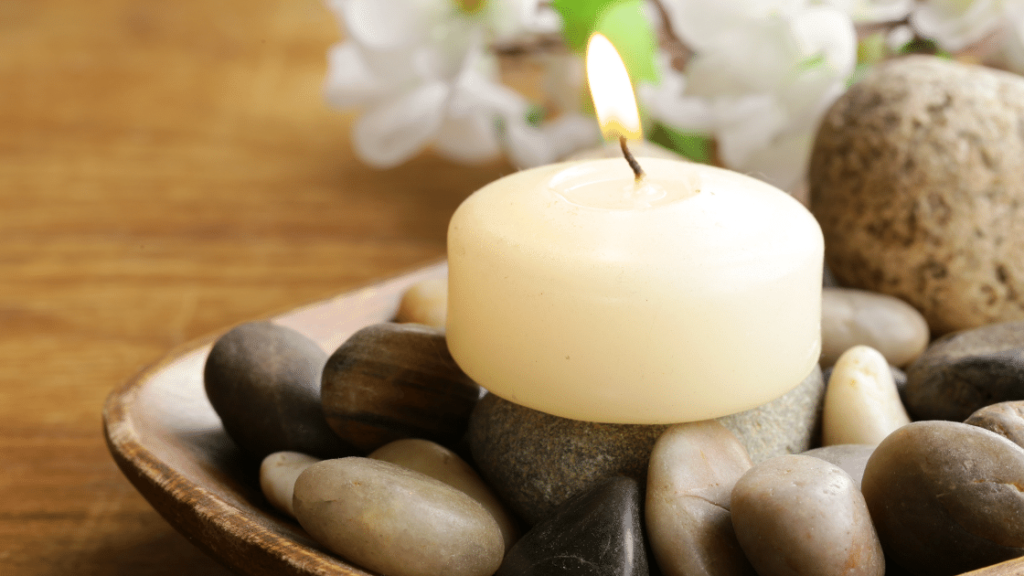Hot Stone: The Ideal Winter Massage

It’s winter, yay! I just checked Denver’s weather predictions and it appears your weekend looks nothing like mine in San Diego!
I won’t rub it in anymore, sorry.
So, you’re cold, cranky, and you don’t want to leave your bed. Your skin might be crackly, due to Colorado’s unmerciful dryness. You may also have a headache since air pressure changes before snowstorms can trigger one of those. And when the snow hits, the inevitable shoveling may wreak havoc on your muscles.
Well, that all sounds less than enjoyable.
Now is there anyone thing that can address all of those problems at the same time? Why, yes! Massage therapy can do just that. It relieves pain, improves mood, soothes the skin, promotes good circulation, boosts immunity… is there anything better than getting a massage on a wintry day? (Other than cocooning yourself in a heated blanket and drinking a festively spiced latte whilst watching The Great British Baking Show: Holidays.) Well, I can’t think of anything better than a massage, per se. But I can think of a massage style that pairs better with a cold day than it does any other time of year! Have you tried hot stone massage yet?
What Is a Hot Stone Massage?
Hot stone massage is a specialized massage modality. Massage stones, which are warmed beforehand and retain their heat well, are applied to the skin and used in a variety of ways.
Massage stones come in many different shapes, though it’s likely you’ve only seen pictures of the round stones. (Almost all advertisements for hot stone massage picture five or so round stones lying stationary on some woman’s back.) In addition to round stones, flat stones and pointed stones can also be used in hot stone massage. Each type comes with its own special use. Round stones are often left stationary on the body, but can also be used for gliding. Flat stones are used to glide over flat areas of the body, such as the surface of the shoulder blade. And pointy stones can be used to dig into the hard to reach spots, such as under the pec muscles or between the ribs.
Why Should You Get a Hot Stone Massage?
Heat therapy is often used to treat tight muscles, body aches, and emotional stress.
When heat is applied to the skin, vasodilation takes place. This opening of the blood vessels sends nutrient-rich blood to the muscles and bones, nourishing and repairing them. Massage by itself promotes circulation, as touch alone stimulates the blood and lymphatic vessels beneath the skin. The addition of heat enhances that benefit, speeding up the healing process and adding an extra layer of relaxation to the massage.
Perfect for fighting off the cold!
Things to Consider
Hot stone massage isn’t for everyone. Avoid hot stone massage if you have any of the following conditions:
- Hypertension
- Diabetes
- Heart disease
- Varicose veins
- Neuropathy
- Tumors
- Metal implants
- Sensitive skin
Book an Appointment!
When scheduling an appointment, make sure you specify that you want to add hot stones to your session. This will allow your therapist time to warm their stones before your start time.
Stay warm!

Katrina Jenkins
Author, Licensed Massage Therapist
Katrina Jenkins graduated from Towson University in 2013 with a Bachelor’s Degree in Health Science and worked as a nurse’s aide briefly before pursuing her true passion. She graduated from the Massage Therapy Institute of Colorado in April 2016 with honors and completed the Touch of Healers Scholarship Program the following summer. She has been a part of the Moyer Total Wellness Team since the summer of 2017.
Resources
Galan, RN, Nicole. “Hot Stone Massage Therapy: 5 Benefits.” Www.Medicalnewstoday.com, 29 May 2017, www.medicalnewstoday.com/articles/317675.
Jenkins, Katrina. “Hot Stone Massage.” Moyer Total Wellness, moyerwellness.com/massage-therapy/hot-stone-massage/.
Photo Credit
Canva by AntonioGuillem
Canva by Kriger Olga

